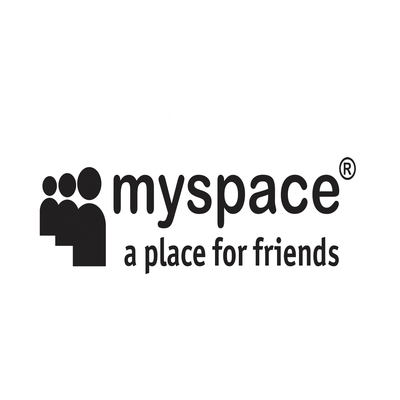What was MoviePass?
MoviePass was a subscription service that allowed users to regularly visit the cinema at a fixed monthly rate. It was founded by Stacy Spikes and Hamet Watt in 2011.
Spikes and Watt wanted to use the declining movie theater attendance to their advantage. Inflated prices were becoming a major deterrent to the public. The business wanted to give the public access to the movies at an affordable price. What happened to MoviePass?

How did MoviePass work?
MoviePass first tested its services in San Francisco in June 2011. Subscribers had the option of watching one movie per day while making it billable on a monthly basis. MoviePass’ monthly subscriptions ranged between $29 to $34 depending on the location.
Initially, the services required the users to print vouchers according to the number of movie tickets. However, the test audiences found this to be very complicated.
As a result, the company decided to switch it up and replace the voucher system with an app and a prepaid card. The app could be used to book a show and the prepaid card could be used for payment in the cinema hall.
How did MoviePass compete with the cinema industry?
MoviePass’ revenue model was based on something called ‘Breakage’.The Breakage model => is a revenue model that is dependent on consumers not using the product or the service they’ve purchased.
This is a popular model among places like gyms, health clubs, etc. In this case, the establishment benefits from consumers who rarely use their subscriptions. Regular users of the service are offset by irregular members.
With their new approach, the MoviePass card was supposed to work at all major theaters, but the company faced quite a bit of resistance in its rollout. Many major theater chains opted out of the collaboration and disassociated with the service.
- A year in, MoviePass amassed around 30,000 subscribers.
- But the ace up their sleeve was something else entirely: data.
- The nature of MoviePass’ business gave the company direct access to all consumer’s preferences and tendencies.
- A lot of theaters wanted access to this data to help boost their sales.
- So the barter was simple: theaters paid MoviePass for consumer data.
- In return, MoviePass paid full price for the tickets, which they sold at a subsidized rate to its subscribers.
The numbers were too enticing that even one of its biggest denouncers, AMC, couldn’t resist. In December 2014, AMC announced a collaboration with MoviePass. After a quick trial, AMC theaters in Boston and Denver started offering the monthly subscription at $45 and $35 dollars and also planned to extend the same in other cities over time.
Management change in MoviePass ventures
In 2016, there was a change in management. Former Netflix executive Mitch Lowe was appointed as the new CEO. Lowe began his tenure by experimenting with different subscription models. Lowe’s eventual goal was to have separate tiers of services ranging from the low end to the high end through different subscription plans.
The new subscription plans were unveiled in July 2016. However, many felt that the new plans abandoned its loyal customer base. But Lowe argued that these plans were designed to attract users who don’t go to the movies often. Lowe termed it the ‘calculated risk involved strategy’.
Nevertheless, the strategy worked and the subscribers’ list skyrocketed up to 20,000 with almost $10 million in yearly revenue.
Around this time, AMC also decided to break off its partnership with MoviePass. Despite the lucrative benefits that MoviePass bought, AMC’s newest CEO decided that the company was better off with its own subscription service.
Sale of MoviePass ventures
In August 2017, MoviePass became a subsidiary of analytics firm Helios and Matheson, when the latter bought a majority stake in the former. With a 51% stake, Helios and Matheson decided to switch up the strategy and slash subscription prices.
Helios and Matheson’s strategy amass a large user base for MoviePass and leverage it for monetization; similar to the strategy of Facebook and Google. The company purchased a majority stake in 2017 and steered away to a new business plan.
When the new, reduced prices were announced, the company’s website went down due to the increase in traffic. By the end of 2017, the service had a million subscribers. 2 months later, in February 2018, the service hit 2 million subscribers. 4 months later, the service had three million paying subscribers.

What Happened to MoviePass?
Financial Issues
However, despite the rising numbers, there was trouble in paradise. By mid-June 2018, MoviePass’ expenses exceeded its revenue by $40 million USD. The company kept haemorrhaging cash and its stock kept crashing.
They were losing money on every new consumer. The company started becoming restless and they slashed their prices further. But nothing seemed to save them from the grave they had dug themselves in.
Where is my MoviePass card?
With a surge in its users, MoviePass’ technology couldn’t keep up. They had thousands of new subscribers every month. But MasterCard could only ship a limited number of cards a week. This caused a backlog in the service. This meant that sometimes people received their card months after they made a payment to the service. Many were left wondering: Where is my MoviePass card?
MoviePass App Issues
The MoviePass app also faced regular crashes and collapsed. MoviePass failed to create reservations in their app. A few screenings of the show used to disappear from the app unannounced. Some shows had no seats available in the app, when infact, the theater was empty.
Many users complained that their cards were charged to a new subscription plan despite cancelling the service. After consecutive website crashes and MoviePass app issues, the company was left with no other option than to limit the subscribers to choosing between just two films a day.
MoviePass Ventures’ Descent
The company made multiple plans and efforts in retaining users. They did not return to their flagship unlimited plan. But they introduced new plans with restrictions like limiting users to a certain number of movies per month (a direct contrast to the USP they started on), purchasing an upfront annual subscription etc.
Following the technological issues, (particularly the MoviePass app issues) things got worse for MoviePass when Helios and Matheson was investigated for potential fraud. A report was filed stating that if the company fails to pay back its merchant loans there would be a service interruption due to unprocessed payments. During this period, users struggled to opt out and complaints started piling up.
MoviePass shut down
In July 2019, the company had to suspend the service for all of its subscribers. After various unsuccessful attempts, the company had to write a parting letter to its subscribers on September 14, 2019. The letter stated that their "efforts to recapitalize MoviePass have not been successful to date."
It was time for goodbye. MoviePass’ assets and related businesses were offered to a co-aquisition unit.
Does MoviePass still work?
So, what happened to MoviePass now? Almost 2 years later, on November 2021, a bankruptcy judge approved the sale of the company back to one of the original owners: Stacy Spikes.
Stacy Spikes made MoviePass’ original website live and is currently exploring a relaunch of the company. Does MoviePass still work? MoviePass is back as Spikes plans to execute the relaunch sometime later in the year.










 Entrepreneurship
Entrepreneurship


